|
80x5 -
240x3 -
240x4 -
320x1 -
320x2 -
320x3 -
640x1 -
640x2
Set display option above.
Click on
images to enlarge. |
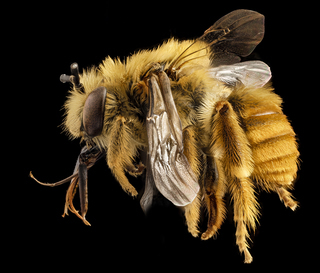
© Copyright source/photographer
· 5
Eucera fulvohirta, M, Baker County, Georgia, side |
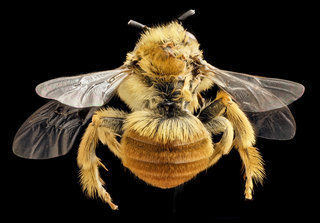
© Copyright source/photographer
· 5
Eucera fulvohirta, M, Baker County, Georgia, back copy |
|
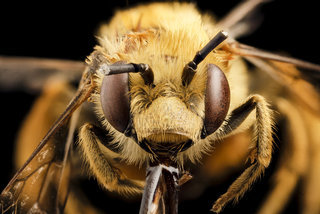
© Copyright source/photographer
· 5
Eucera fulvohirta, M, Baker County, Georgia, face |
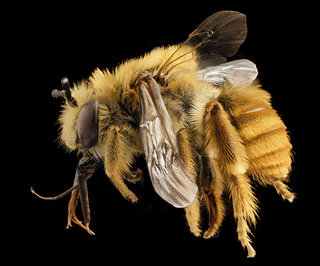
© Copyright source/photographer
· 5
Eucera fulvohirta, M, Baker County, Georgia, side |
|
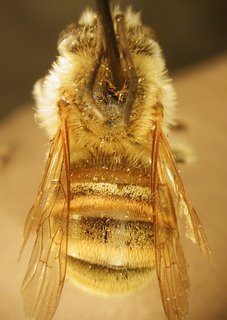
© Mary Paul
· 1
Eucera fulvohirta, male, top |
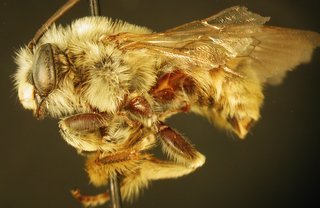
© Mary Paul
· 1
Eucera fulvohirta, male, side |
|
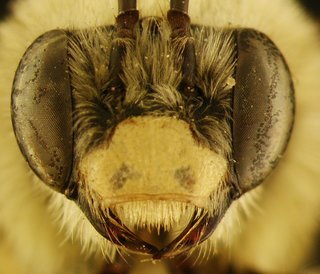
© Mary Paul
· 1
Eucera fulvohirta, male, face |
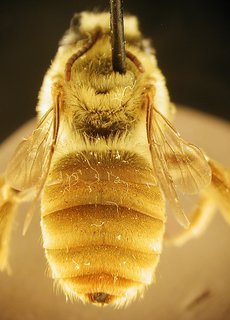
© Mary Paul
· 1
Eucera fulvohirta, female, top |
|
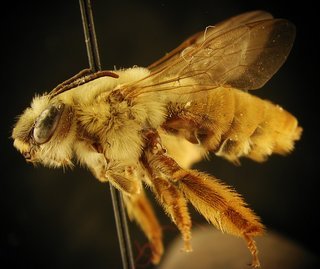
© Mary Paul
· 1
Eucera fulvohirta, female, side |
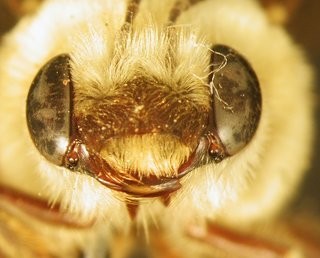
© Mary Paul
· 1
Eucera fulvohirta, female, face |
|
Overview |
Reprinted with permission from: Mitchell, T.B. 1962 Bees of the Eastern United States. North Carolina Agricultural Experiment Station Technical Bulletin No. 152.
FEMALE—Length 15-16 mm., breadth of abdomen 5.5-6.5 mm.; black, the apical tarsal segments becoming brownish-testaceous; tegulate yellowish-hyaline; wings lightly infuscated, veins pale testaceous to piceous; abdominal terga broadly yellowish-hyaline and transparent apically beneath dense tomentum; cheeks slightly narrower than eyes; clypeus rather strongly protuberant, its median length about half the distance between eyes; eyes subparallel; mandibles entire or obscurely bidentate at apex; basal segment of flagellum about equal to segments 2 and 3 combined; tibial spurs straight and simple; punctures of clypeus quite coarse, deep and close, those on labrum very close medially, becoming slightly separated and coarser at each side; supraclypeal area rather closely but shallowly punctate, lateral areas of face below level of antennae finely and closely punctate, surface above antennae closely and finely punctate across entire width of face except for a shining, median impunctate line below the anterior ocellus; cheeks somewhat shining beneath dense pubescence, punctures fine and quite close throughout; median posterior area of scutum shining between deep, distinct, slightly separated punctures, becoming closer over anterior half and more narrowly along the lateral and posterior margins; scutellum shining between somewhat finer but quite deep and distinct, close punctures; pleura dull beneath dense pubescence, very finely and closely punctate throughout; posterior face of propodeum rather dull, punctures shallow, well separated but hardly sparse, dorsal area becoming narrowly and finely rugose along upper margin, lateral faces closely punctate, punctures rather coarse posteriorly, becoming very minute and densely crowded anteriorly and below; basal abdominal tergum deeply, distinctly and quite closely and coarsely punctate across disc, punctures becoming somewhat more minute and sparse toward the rather broadly hyaline apical margin; the more apical terga very finely and closely punctate basally, punctures becoming more minute and sparse apically on each, inevident on 4 and 5 due to dense tomentum; pygidium triangular, with rather narrowly rounded apex.
MALE—Length 12.5-13.5 mm., breadth of abdomen 5.5 mm.; black, the clypeus and labrum bright yellow, mandibles more or less yellowish toward apex, apical tarsal segments becoming brownish-testaceous, spurs pale yellowish, tegulae yellowish-hyaline; wings very lightly infuscated, veins testaceous to piceous; apical impressed areas of abdominal terga yellowish-hyaline and transparent; cheeks slightly narrower than eyes; clypeus rather strongly protuberant, its median length about half the distance between eyes; eyes subparallel; mandibles entire or obscurely bi-dentate at tips; basal segment of flagellum fully twice as long as pedicel, segment 2 nearly five time longer; tibial spurs straight and simple; punctures of clypeus rather coarse, deep and close, those on labrum somewhat finer and closer medially, becoming somewhat coarser laterally; supreclypeal area dull, punctures fine and rather sparse, lateral areas of face below level of antennae very finely and closely punctate, surface above antennae quite closely and finely punctate across entire width except for a median impunctate line below anterior ocellus; cheeks very finely and rather closely punctate beneath dense pubescence; median posterior area of scutum shining, quite deeply and coarsely punctate, punctures only slightly separated, becoming much closer anteriorly, laterally and along the narrow posterior margin; scutellum shining, somewhat more finely but very closely punctate throughout; pleura dull, punctures fine and close throughout; posterior face of propodeum rather dull, punctures shallow and irregular, dorsal area becoming rather finely and irregularly rugose along upper margin, lateral faces dull, very finely and very closely punctate; punctures of basal abdominal tergum somewhat coarser than those on the following terga, well separated medially, becoming somewhat finer and closer laterally, and becoming very minute and rather sparse toward the apical, impunctate rim; terga 2-5 with very fine and quite close punctures across basal areas, the yellow apical impressed areas somewhat more finely and sparsely punctate, only the very narrow rims becoming impunctate; pubescence long and copious, entirely pale ochraceous on head, thorax and legs; basal abdominal tergum with copious, elongate, pale ochraceous pubescence, the following terga with short but erect, rather thin, pale yellowish pubescence, apical impressed areas with more decumbent and dense yellowish tomentum, forming rather distinct fasciae; tergum 6 with a distinct angle at each extreme side; median length of pygidial plate somewhat greater than basal width, margins carinate, rather strongly convergent apically, a very slight constriction near the broadly rounded apex; sterna 7 and 8 as shown (fig. 89); genital armature much as in hamata (fig. 88), but gonostyli short pubescent on outer sides.
DISTRIBUTION — North Carolina to Georgia, April to May.
FLOWER RECORDS — Eleagnus and Vicia.
|
|
|
Names | |
|
|
| Supported by | |
Updated: 2024-04-25 03:51:43 gmt
|